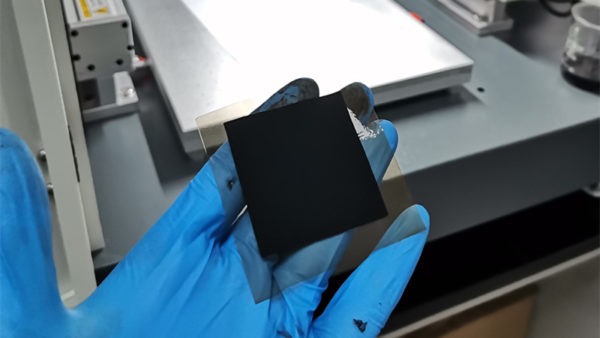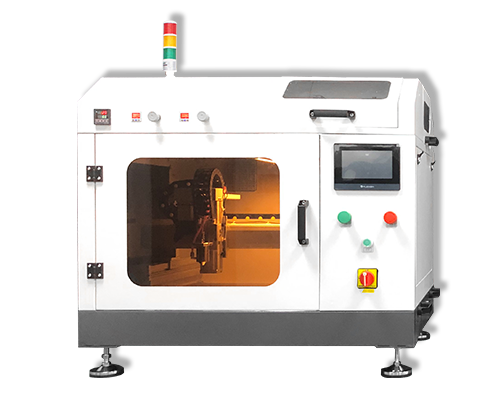Types and Coatings of Bipolar Plates
Types and Coatings of Bipolar Plates – Catalyst Coated Membranes – Cheersonic
The bipolar plate is an important component of the PEMFC stack, accounting for about 70% of the overall quality and 30% of the price. According to the bipolar plate material, it can be divided into graphite bipolar plate, metal bipolar plate and composite bipolar plate. Graphite and its composite materials have high brittleness, high gas permeability, and high cost. In contrast, metal bipolar plates have higher strength, better formability, impact resistance, and lower gas permeability. Figure 2 sorts out the volumetric power density and bipolar plate types of automotive PEMFC stacks of some domestic and foreign manufacturers. According to different applicable models and power, PEMFC stacks can be divided into three categories: high power, medium power, and low power.

Metal bipolar plates are widely used in high-power stacks because their formability in an ultra-thin state is superior to other materials, while graphite bipolar plates and composite bipolar plates are generally used in medium and low-power stacks .
Commonly used metal bipolar plate materials include stainless steel, aluminum alloy, titanium alloy, foam metal, etc. Among many metal materials, stainless steel has been widely used because of its good mechanical properties and low cost. Although the proportions of elements in different stainless steels may be different, the types of elements are roughly the same, mainly including metal elements such as Fe, Ni, Mn, Cr, Cu, Mo, and non-metallic elements such as C, N, P, S, and Si.
The conductivity and durability of metal bipolar plates are affected by the surface topography and structure. In harsh working environments, surface corrosion and passivation of metal bipolar plates may occur. Since the passivation film can protect the metal under the film from further corrosion, many early PEMFCs directly used stainless steel, Al, Ti, Ni and other materials that are easy to form a passivation film as bipolar plates. However, the passivation film changes the surface morphology of the bipolar plate and the diffusion layer, leading to an increase in the interface contact resistance (ICR), which will reduce the output power, and the ICR increases with the increase of the passivation film thickness, so Current research mainly focuses on the coating of metallic bipolar plates according to the elemental composition of the coating.
Coatings can be divided into metallic coatings, non-metallic coatings and composite coatings. Metal coatings include metal nitride coatings, metal carbide coatings, metal oxide coatings and other metal coatings (such as precious metal coatings, alloy coatings, etc.). Metallic coatings have excellent electrical conductivity and chemical stability, but some coatings are expensive, such as precious metal coatings, which are less used today; non-metallic coatings include graphite-based coatings and conductive polymer coatings, which are It has the characteristics of simple preparation and low cost, but some coatings also have the problems of poor corrosion resistance and easy peeling off.
Composite coating combines the advantages of metal coating and non-metal coating, and can maintain good electrical conductivity on the basis of certain corrosion resistance, but doped metal ions will also affect the surface microstructure of the coating. Coating processing methods can be divided into electroplating, chemical plating, vapor deposition, heat treatment, ion implantation and spraying. Coatings with the same composition are treated in different ways, and the conductivity and durability will be affected differently.
Cheersonic’s fuel cell catalyst coating systems are uniquely suited for these challenging applications by creating highly uniform, repeatable, and durable coatings. Using the company’s patented ultrasonic spray head technology, it can spray uniformly and efficiently on proton exchange membranes and gas diffusion layers. Uniform catalyst coatings are deposited onto PEM fuel cells, GDLs, electrodes, various electrolyte membranes, and solid oxide fuel cells with suspensions containing carbon black inks, PTFE binder, ceramic slurries, platinum and other precious metals. Other metal alloys, including Platinum, Nickel, Ir, and Ru-based fuel cell catalyst coatings of metal oxide suspensions can be sprayed using ultrasonics for manufacturing PEM fuel cells, polymer electrolyte membrane (PEM) electrolyzer, DMFCs (Direct Methanol Fuel Cells) and SOFCs (Solid Oxide Fuel Cells) to create maximum load and high cell efficiency.
The advantages of Cheersonic’s ultrasonic equipment include:
1.Very high Platinum utilization proven in MEA fabrication; as high as 90%.
2.Non-clogging
3.Low-flow spray reduces spillage and air pollution.
4.Continuous or intermittent operation possible
5.Highly porous coatings are extremely durable, preventing cracking or peeling of catalyst layer.
6.No moving parts to wear out
7.Minimal maintenance and downtime.
8.Robust design and materials resist corrosion.
9.Ultrasonic energy disperses the agglomerated particles, producing a homogeneous coating.
About Cheersonic
Cheersonic is the leading developer and manufacturer of ultrasonic coating systems for applying precise, thin film coatings to protect, strengthen or smooth surfaces on parts and components for the microelectronics/electronics, alternative energy, medical and industrial markets, including specialized glass applications in construction and automotive.
Our coating solutions are environmentally-friendly, efficient and highly reliable, and enable dramatic reductions in overspray, savings in raw material, water and energy usage and provide improved process repeatability, transfer efficiency, high uniformity and reduced emissions.
Chinese Website: Cheersonic Provides Professional Coating Solutions


